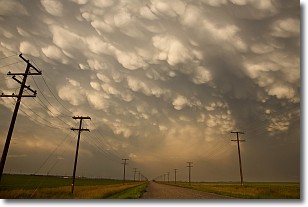Weather Alert in Washington
Fire Weather Watch issued July 30 at 4:07AM PDT until July 31 at 8:00PM PDT by NWS Spokane WA
AREAS AFFECTED: East Portion of North Cascades National Park / Lake Chelan National Recreation Area; East Washington North Cascades; Okanogan Highlands & Kettle Mountains; Colville Reservation; Okanogan Valley; Methow Valley
DESCRIPTION: ...HOT, DRY, AND UNSTABLE CONDITIONS WITH ISOLATED DRY THUNDERSTORMS WEDNESDAY AFTERNOON AND EVENING FOR ZONE 696... ...POTENTIAL FOR SCATTERED DRY THUNDERSTORMS FOR 697, 698, 699, 702, 703, 704 THURSDAY AFTERNOON AND EARLY EVENING... The National Weather Service in Spokane has issued a Fire Weather Watch for ABUNDANT LIGHTNING, which is in effect from Thursday afternoon through Thursday evening. * Affected Area: East Portion of North Cascades National Park/Lake Chelan National Recreation Area (Zone 697), East Washington North Cascades (Zone 698), Okanogan Highlands and Kettle Mountains (Zone 699), Colville Reservation (Zone 702), Okanogan Valley (Zone 703) and Methow Valley (Zone 704). * Timing: 1 PM to 8 PM Thursday * Thunderstorms: Scattered thunderstorms with abundant lightning. * Outflow Winds: Outflow boundaries near storms will bring potential for erratic wind gusts 30 to 50 mph and could travel quite a distance from the core of the storm. * Impacts: Very warm and dry conditions will be in place as storms develop Thursday afternoon. A mix of wet and dry thunderstorms combined with dry fuels will lead to the potential for new fire starts that may overwhelm initial attack capabilities. Gusty outflow winds could may result in rapid spread with any new starts.
INSTRUCTION: A Fire Weather Watch means that critical fire weather conditions are forecast to occur. Listen for later forecasts and possible Red Flag Warnings.
Want more detail? Get the Complete 7 Day and Night Detailed Forecast!
Current U.S. National Radar--Current
The Current National Weather Radar is shown below with a UTC Time (subtract 5 hours from UTC to get Eastern Time).

National Weather Forecast--Current
The Current National Weather Forecast and National Weather Map are shown below.

National Weather Forecast for Tomorrow
Tomorrow National Weather Forecast and Tomorrow National Weather Map are show below.

North America Water Vapor (Moisture)
This map shows recent moisture content over North America. Bright and colored areas show high moisture (ie, clouds); brown indicates very little moisture present; black indicates no moisture.

Weather Topic: What are Mammatus Clouds?
Home - Education - Cloud Types - Mammatus Clouds
 Next Topic: Nimbostratus Clouds
Next Topic: Nimbostratus Clouds
A mammatus cloud is a cloud with a unique feature which resembles
a web of pouches hanging along the base of the cloud.
In the United States, mammatus clouds tend to form in the warmer months, commonly
in the Midwest and eastern regions.
While they usually form at the bottom of a cumulonimbis cloud, they can also form
under altostratus, altocumulus, stratocumulus, and cirrus clouds. Mammatus clouds
warn that severe weather is close.
Next Topic: Nimbostratus Clouds
Weather Topic: What is Precipitation?
Home - Education - Precipitation - Precipitation
 Next Topic: Rain
Next Topic: Rain
Precipitation can refer to many different forms of water that
may fall from clouds. Precipitation occurs after a cloud has become saturated to
the point where its water particles are more dense than the air below the cloud.
In most cases, precipitation will reach the ground, but it is not uncommon for
precipitation to evaporate before it reaches the earth's surface.
When precipitation evaporates before it contacts the ground it is called Virga.
Graupel, hail, sleet, rain, drizzle, and snow are forms of precipitation, but fog
and mist are not considered precipitation because the water vapor which
constitutes them isn't dense enough to fall to the ground.
Next Topic: Rain
Current conditions powered by WeatherAPI.com




